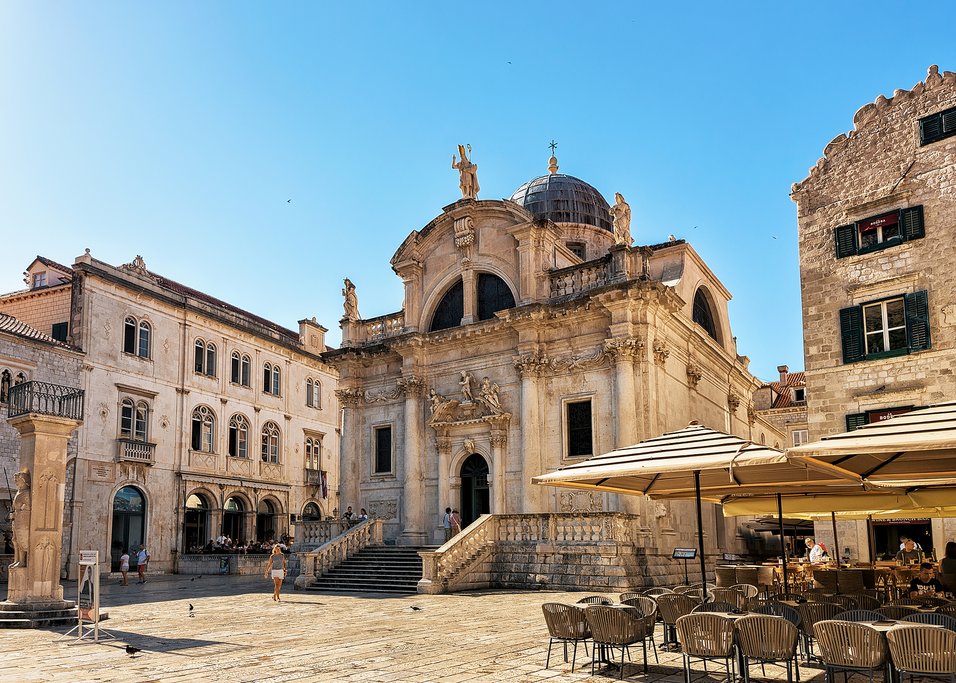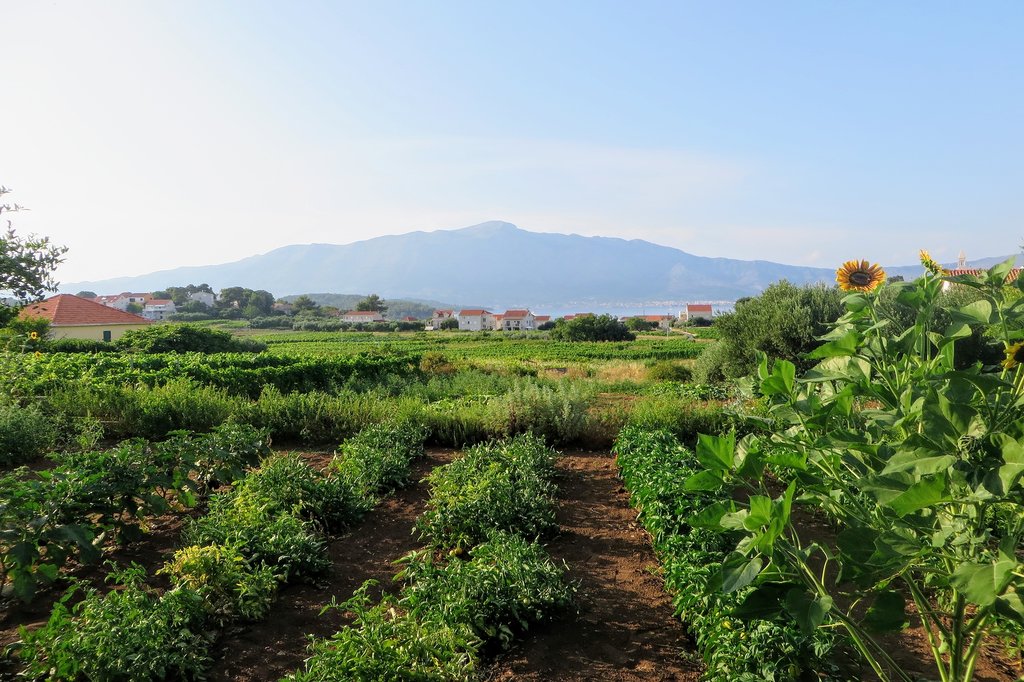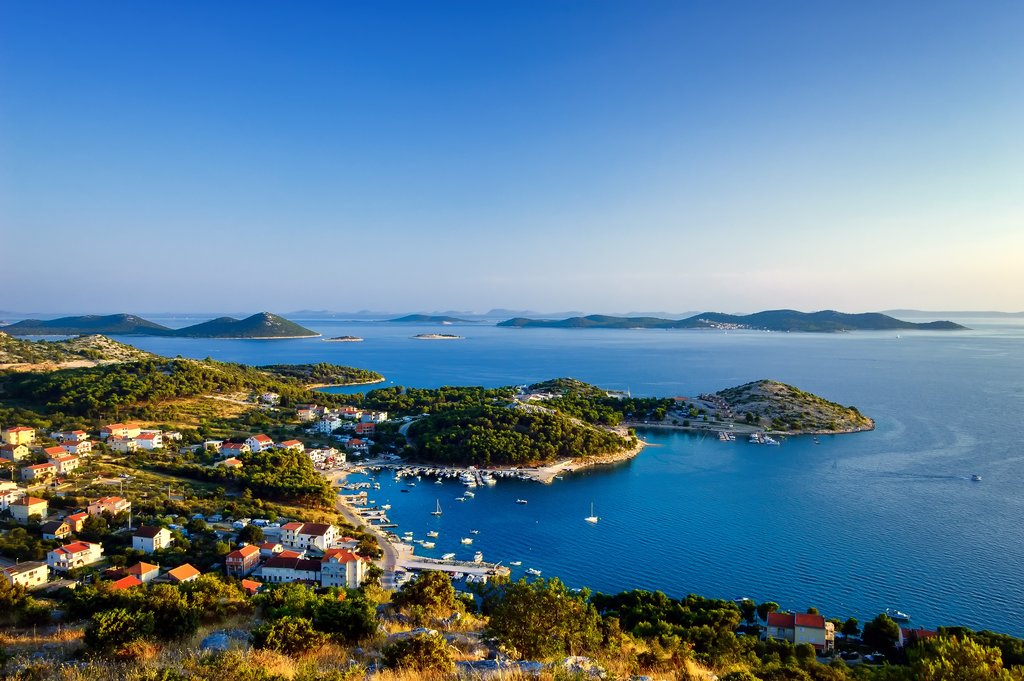Highlights
- Go sea kayaking around Koločep
- Eat incredible oysters and mussels in Ston
- Cycle through vineyards for a wine tasting on Korčula
- Picnic at Tito's Caves on Hvar
- Paddleboard between the islands of Kornati National Park
Brief Itinerary
| Day | Highlights | Overnight |
|---|---|---|
| Day 1 | Arrive in Dubrovnik | Dubrovnik |
| Day 2 | Walking Tour of Dubrovnik | Dubrovnik |
| Day 3 | Day Trip to the Island of Koločep | Dubrovnik |
| Day 4 | Transfer to Korčula via Pelješac Peninsula | Korčula Town |
| Day 5 | Cycling & Wine Tasting Tour in Lumbarda | Korčula Town |
| Day 6 | Ferry to Hvar, Explore | Hvar Town |
| Day 7 | Free Day on Hvar | Hvar Town |
| Day 8 | Ferry to Split, Transfer to Zadar | Zadar |
| Day 9 | Paddleboarding in Kornati National Park | Zadar |
| Day 10 | Transfer to Zagreb via Plitvice Lakes National Park | Zagreb |
| Day 11 | Depart Zagreb |
Detailed Itinerary
Day 1: Arrive in Dubrovnik

Welcome to the "Pearl of the Adriatic." Upon arrival at the airport, you'll transfer to your hotel for check-in. Despite being tired from the journey, you'll likely want to get out and explore. Can't-miss activities include riding the cable car up to Srđ Mountain to take in the sunset over the nearby Elafiti Islands, visiting Lovrijenac and Bokar fortresses, and walking along the smooth, limestone-paved streets of historic Old Town.
A piece of history, Dubrovnik is one of the most ancient fortress cities in Europe. And while there's evidence of settlements as far back as the Byzantine era, this area only came into its own as an important power in the 13th century due in part to its strategic coastal position. Dubrovnik's long and storied history is told in its beautiful Gothic, Renaissance, and Baroque churches, monasteries, palaces, and fountains, all found within its imposing fortress walls.
After spending some time getting to know the city, duck into one of Dubrovnik's many wine bars to relax. It's a good plan, as there's no better manner in which to celebrate your first day in Croatia than by enjoying a glass of white or red wine as the sun goes down over Dubrovnik's Old Town. For dinner, there are a number of great restaurants you can choose from.
Day 2: Walking Tour of Dubrovnik

Start your day early (around 8 am) to avoid the crowds and embark on a tour of Dubrovnik, where you'll meet your expert guide outside the entrance to the medieval city at the 16th-century Pile Gate. Entering Old Town, you'll uncover centuries of the city's rich history as you listen to stories of local life and legends and of the importance Dubrovnik once held in the era of the Republic. Highlights include Onofrio's Fountain, the 15th-century Rector's Palace, Luza Square, the Church of St. Blaise (St. Vlaho), and the café-lined streets of Brsalje Street.
After touring the streets and alleys, you'll head for Lovrijenac Fortress as well as the city's impressive defensive walls, the second-largest set of city walls in the world. At certain places, the wall rises 75 feet (23 m) high, offering excellent vantage points for photos of the coastline.
For the rest of the afternoon, explore Dubrovnik and its surroundings on your own or enjoy the afternoon sun on the nearby beaches. Come early evening, you can get stunning panoramic views over the city and Adriatic by taking the cable car up to Srđ Mountain before descending back down for dinner at one of Dubrovnik's great restaurants.
Day 3: Day Trip to the Island of Koločep

Today, you'll visit one of the most beautiful islands in the Elafiti archipelago. Koločep (referred to by locals as "Kalamota") is the southernmost inhabited island in Croatia, is a little over a square mile, and is home to just over 150 year-round residents, mostly living in Gornje Čelo and Donje Čelo. Two miles (3 km) of paths connect the two hamlets, with additional paths and walkways connecting the rest of the island through dense vegetation. There are no cars on Koločep, adding to its relaxed atmosphere.
Though a popular day trip from Dubrovnik, the island maintains a somber feel. Visit Donje Čelo to admire its cluster of stone houses before relaxing on one of Croatia's rare sandy beaches. A little way uphill, you can take a concrete path that cuts inland to Gornje Čelo. From there, explore the many paths crisscrossing through pine and deciduous forest that open up to beautiful views of the Adriatic.
There's also the option to take a scenic hike or even go sea kayaking around the island. The latter is highly enjoyable due to the number of beaches, coves, and hidden coastal caves to explore. As an added bonus, there's a great little family-run restaurant on Koločep that serves the best-grilled calamari in Croatia.
Ferry time (Dubrovnik to Koločep): 30 minutes
Day 4: Transfer to Korčula via Pelješac Peninsula

Today you'll leave Dubrovnik behind and transfer an hour northwest to the Pelješac Peninsula as you make your way to Korčula. En route, stop in the medieval city of Ston to explore one of the longest defensive stone walls in Europe (originally built to keep predators away from the town's saltpans) and discover the importance this area held in the 14th century. Catch great views of the glittering saltpans below from a parapet walkway on Ston's 3,937-foot (1,200 m) wall.
For lunch, treat yourself to a light meal of Ston's famous fresh oysters or mussels accompanied by a glass of local Dingač red wine. Should you choose, you can take a tour of one of the area's family-run wineries for a further sampling of Dingač's famous reds.
When you're ready, continue your journey to Orebić to catch the ferry to Korčula. Once on the island, the afternoon is yours to discover Korčula's numerous restaurants, taverns, shops, and bars as you roam the maze of gray stone houses, alleys, churches, and squares. Check into your hotel in Old Town before heading out to explore, either on foot or perhaps on a rented bicycle, traveling from the town center to one of the secluded beaches on the island.
Driving time (Ston to Orebić): 1 hour
Ferry time (Orebić to Korčula): 20 minutes
Chat with a local specialist who can help organize your trip.
Day 5: Cycling & Wine Tasting Tour in Lumbarda

Spend the day on a cycling tour (private or with a group) across the island from Korčula Town to Lumbarda, with stops along the way to visit beaches and wineries. Pick up your bike and meet your guide in Korčula and ride out of the town south toward Lumbarda. You will cycle through fields, villages, and wineries, covering asphalt, gravel, and dirt roads with vistas opening up to the Adriatic Sea as well as to the impressive Mount Ilija on the nearby Pelješac Peninsula.
This gentle route explores the ancient and historic sites of the eastern side of the island as you work your way to the spread-out village of Lumbarda. Boasting beautiful beaches and centuries-old winemaking traditions, Lumbarda is home to Grk, a white grape variety that will pair well with your lunch or dinner. Some of Croatia's best white wines are produced on Korčula, and you won't be left wanting.
You'll also have the opportunity to visit Bire Winery, a family-run winery that produces Grk wine, as well as its own varietals, including a rosé. All the wineries in the area produce Grk, which is unique to this region due to its sandy soil and Plavac Mali (a red grape grown extensively across South Dalmatia that acts as a pollinator for the Grk vines).
Take some time to relax on one of Lumbarda's beaches before returning to Korčula Town for the evening.
Cycling time: 3-5 hours
Day 6: Ferry to Hvar, Explore

Catch a morning ferry from Korčula to Hvar and check into your hotel. A Croatian island in the Adriatic Sea, Hvar draws visitors for its natural setting, mild climate, and its historic town of the same name. You'll have the rest of the morning to explore Hvar Town, where you can visit the Renaissance-era Cathedral of St. Stephen or climb the steps to the terrace outside of the historic Arsenal to enjoy views over the harbor and the surrounding area.
For some of the best views of the island, Hvar Town, and the nearby Pakleni Islands, take a short walk up to the 16th-century Španjola Fortress. Or, join a kayaking tour and head out on the Adriatic to discover the many secluded coves that outline the islands. To cover some ground and appreciate the variation in the island landscape: from lavender plantations and olive groves to vineyards and pine woods, you may like to join a (wine-tasting) cycling or hiking tour. The less active might opt to rent a scooter for faster coverage of the local scenery.
After the day's adventures, treat yourself to a drink in the ancient piazza of Hvar, overlooking the Venetian loggia, seventh-century fortification walls, and the oldest municipal theater in Europe.
Ferry time (Korčula to Hvar): 1.5 hours
Day 7: Free Day in Hvar

Today, you have free range to explore Hvar at your own pace.
A great way to discover much of the island is to rent a scooter in Hvar Town and drive along the coastline through olive groves, lavender fields, and vineyards, stopping along the way to lie out on a beach you happen upon. In the afternoon, switch gears and join a half-day wine tour to sample some of the region's best wines as well as learn about its 2,400-year-old history. In the early evening, bring a bottle of wine and head to Tito's Caves, just north of Stari Grad, for a picnic as you watch the sunset from these hidden-away caves.
The more athletically inclined might prefer an early morning start to trek up to the 16th-century Španjola Fortress for views over Hvar Town and the Pakleni Islands, followed by a cycling tour around Hvar to explore the interior of the island. Another great option is to embark on a hike from Hvar Town to visit Velo Grablje, a near-deserted 500-year-old town, and Malo Grablje, a nice hike that takes you down a canyon into the village. Here you can stop for lunch to enjoy a delicious meal at perhaps the most authentic of the island's taverns.
One last option is to explore the nearby Pakleni Islands. You can rent a private taxi boat to tour around the islands for the day, where you might consider taking a 15-minute water taxi to Jerolim and Stipnska or continue on to other islands farther out to walk around and explore. For the more adventurous, there is the option to go on a guided full-day or half-day sailing or kayaking tour of the islands—a great way to discover the many secluded beaches and lagoons!
Day 8: Ferry to Split, Transfer to Zadar

In the morning, you'll catch a one-hour ferry from Hvar to Split, where you'll pick up your rental car again. Today, you'll have time to explore the Adriatic coast as you make your way from Split up to Zadar.
Zadar is an ancient city, full of historical and cultural monuments. It is three thousand years old, a city of tumultuous and dynamic history, often destructed, looted, devastated, every time emerging from the ruins stronger, richer, and more beautiful.
Day 9: Paddleboarding in Kornati National Park

Today is reserved for a fun day of standup paddleboarding ("SUP") between a number of islands in Kornati National Park. Nearly devoid of life lie the barren and ruggedly beautiful 90 or so islands of the Kornati archipelago, grouped around the significantly larger Kornat Island. You'll first partake in an introductory SUP course before balancing yourself on your board and gliding along the smooth channels of the Adriatic to take in the islands' stunning raw beauty: jagged rocks, indented coastline, and relatively untouched marine ecology.
Along the way, there will also be time to explore some of the islands more intimately, like that of the 70-year-old stone movie-set village on Mana island.
Day 10: Transfer to Zagreb via Plitvice Lakes National Park

You'll want an early start for your drive to Plitvice Lakes National Park, one of Croatia's most popular national parks. Gorgeous at any time of the year, Plitvice Lakes National Park is Croatia's natural masterpiece. The park is home to an exquisite collection of 16 emerald green and blue travertine lakes, more than 90 waterfalls, and numerous caves, which together comprise a UNESCO World Heritage Site. The lakes are surrounded by beech and pine forests and are home to extensive wildlife.
Here, you can request a private, expert local guide to lead you through the park along the wooden paths and bridges to show you the most impressive points of interest and explain the significance of its history and natural features. After your tour, you will have some free time to continue exploring, or you may wish to bring a bought lunch (and a bottle of wine!) with you to enjoy a picnic.
When you're finished in the park, continue your onward journey to Zagreb, Croatia's capital. Check into your hotel to settle in before spending the rest of the day as you like. The city center is easily walkable, and the streets and parks are easy to navigate on foot. All the main attractions and restaurants are within walking distance. Consider visiting the Homeland War Museum or the ever-popular Museum of Broken Hearts, or stroll through the city center, enjoying 17th-century neo-Baroque architecture found at Zagreb's Art Pavilion and Croatian National Theater.
Zagreb also has a number of beautiful city parks, which are great for exploring and people-watching, especially in the late afternoon. Maksimir is a great option, with a variety of cafés nearby to pick up a coffee for your stroll.
Driving time (Zadar to Plitvice): 1.5-2 hours
Driving time (Plitvice to Zagreb): 2 hours
Day 11: Depart Zagreb

If you have a free morning before departing, make like a local and visit one of the many café-bars in central Zagreb. Try the pedestrianized section around Bogovićeva and Preradovićeva or the popular Tkalčićeva street for a morning coffee and pastry and to people-watch before you say farewell to Zagreb and head to the airport.
Driving time (Central Zagreb to the airport): 30 minutes
More Great Croatia Itineraries
Looking for more inspiration for your trip to Croatia? Check out these other Croatia itineraries, explore different ways to spend 11 days in Croatia, or discover the best time to visit Croatia.


